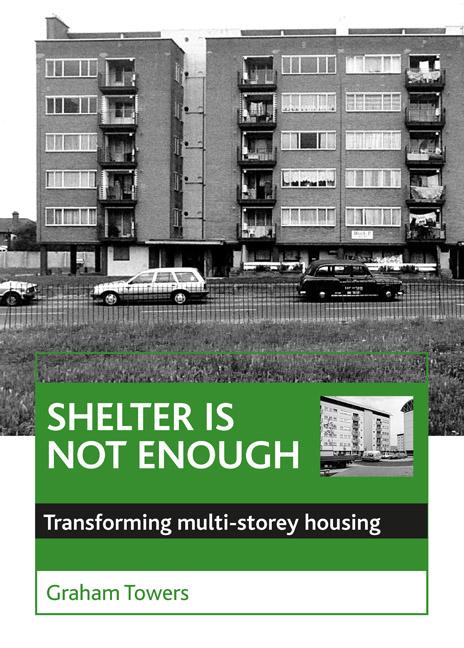Book contents
- Frontmatter
- Contents
- List of figures and tables
- Dedication
- Preface
- Foreword
- one Introduction
- two Forming the multi-storey legacy
- three Politics, economics and housing form
- four Social stigma and community action
- five Redeeming the estates
- six Facets of regeneration
- seven Building a model framework
- eight Prospects for transformation
- nine Ending the estate syndrome
- ten On broader horizons ...
- Bibliography
- Appendix: Case study research
- Index
- Frontmatter
- Contents
- List of figures and tables
- Dedication
- Preface
- Foreword
- one Introduction
- two Forming the multi-storey legacy
- three Politics, economics and housing form
- four Social stigma and community action
- five Redeeming the estates
- six Facets of regeneration
- seven Building a model framework
- eight Prospects for transformation
- nine Ending the estate syndrome
- ten On broader horizons ...
- Bibliography
- Appendix: Case study research
- Index
Summary
In the mid-1990s a leading newspaper published a survey of prosperity and poverty in 9,000 British ‘postal sectors’ – small neighbourhoods of up to 2,000 people (The Observer, 1996). The wealthiest district – narrowly ahead of Purley in the Surrey ‘stockbroker belt’ and Dulwich, an exclusive area in South London – was the Barbican. On the edge of the City of London, the Barbican is one of the densest developments of multi-storey housing in Britain. Originally designed to house a mixed community in which all social groups were represented, the Barbican has gradually become dominated by well-off professionals. At the other end of the scale, the poorest district in Britain was the east end of Sunderland – a dockside area of four-storey inter-war tenement blocks. Very run-down and neglected, these flats now provide homes only for the poorest and most needy tenants. Block by block they are being demolished.
This stark contrast neatly encapsulates the conundrum of multi-storey housing. While flats, even in the highest of blocks, provide successful housing for some of the wealthiest in society, those built for low-income tenants have, almost universally, become the focus of serious problems. Most of the multistorey social housing in Britain was built in a 20-year period from 1955 until the mid-1970s. In an accelerating programme, which reached its zenith in the 1960s, 19th-century housing in the inner urban areas was demolished and replaced by estates of multi-storey flats. Initially these new dwellings, with high standards of space and servicing, were welcomed as a great improvement over the physically decaying, overcrowded and often unhealthy housing that fell to the bulldozers. However, very soon after they were built, these flats began to deteriorate. Many of the estates became stigmatised and ‘hard-tolet’.
The environment of these new buildings, so different from the old terraced streets, quickly proved unsuitable for those who had been rehoused. It was not just the isolation felt by families with young children and by elderly people. The uncontrolled common parts – the lifts and staircases, the underground garages – quickly became abused and vandalised. The public spaces of the estates became despoiled, setting off a spiral of decline. Many inner-city estates are, today, beset by a multitude of problems. Socially they are characterised by high unemployment and low economic activity; by concentrations of single parents and large numbers of children; and by low levels of educational attainment.
- Type
- Chapter
- Information
- Shelter Is Not EnoughTransforming Multi-Storey Housing, pp. 1 - 10Publisher: Bristol University PressPrint publication year: 2000



